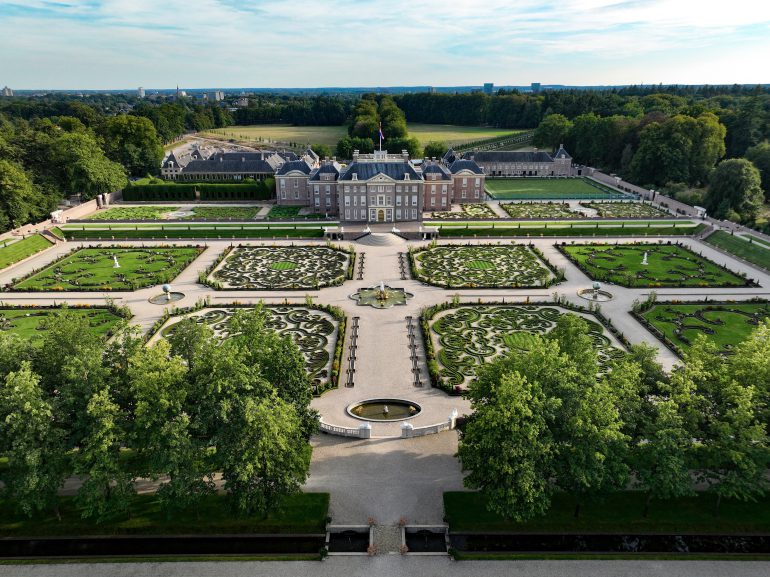Paleis Het Loo is a historic palace and a contemporary museum, steeped in history, yet very much alive. This royal palace in the middle of the Veluwe heathland has been a favourite residence of the Dutch House of Orange for three centuries. Kings, queens, stadtholders, princes, princesses and their households resided here.
There are two tours for visitors through the palace, each with its own audio guide. On focuses on the story of king-stadtholder Willem III and his wife, queen Mary II, the other brings the palace’s past to life viewed through the eyes of queen Wilhelmina.
The first route takes visitors through the 17th-century rooms Willem and Mary built. They filled their home with lavishly decorated furniture, fabrics, rare plants and flowers to impress their guests. Their décor contains a great deal of symbolism, signaling their virtues and status as a royal couple. The second route shows Wilhelmina’s rooms throughout her life, from princess to queen, from playroom to office. Paleis Het Loo has been a historic museum for forty years. The authentic interior, baroque gardens and modern exhibitions offer a unique outing in which past and present meet. With fixed and temporary exhibitions, visitors can delve deeper into the palace’s history and the royals’ life.
From 12 October, two in-focus exhibitions will be on show at Paleis Het Loo. Queens by Andy Warhol will exhibit the entire 1985 diamond-dusted ‘Royal Edition’ series, portraying all four reigning queens across the world at that moment in time. Today, Paleis Het Loo is the only museum in Europe to hold all sixteen prints of Warhol’s ‘Royal Edition’ in its collection and one of the few museum worldwide holding the complete collection. The ‘Reigning Queens’ series consists of sixteen screen prints of four queens: queen Beatrix of the Netherlands, queen Elizabeth II of the United Kingdom, queen Margrethe II of Denmark and queen Ntombi Tfwala of Eswatini, formerly Swaziland.
The second in-focus exhibition, Featured: colonial cabinet, features a cabinet showing two carvings of enslaved people and considers the cabinet from various perspectives. Paleis Het Loo has been investigating traces of colonialism and slavery in its collection for several years. Five perspectives reflect on the cabinet from its connection to slavery, its imagery and changing perspectives on enslavement over time.
